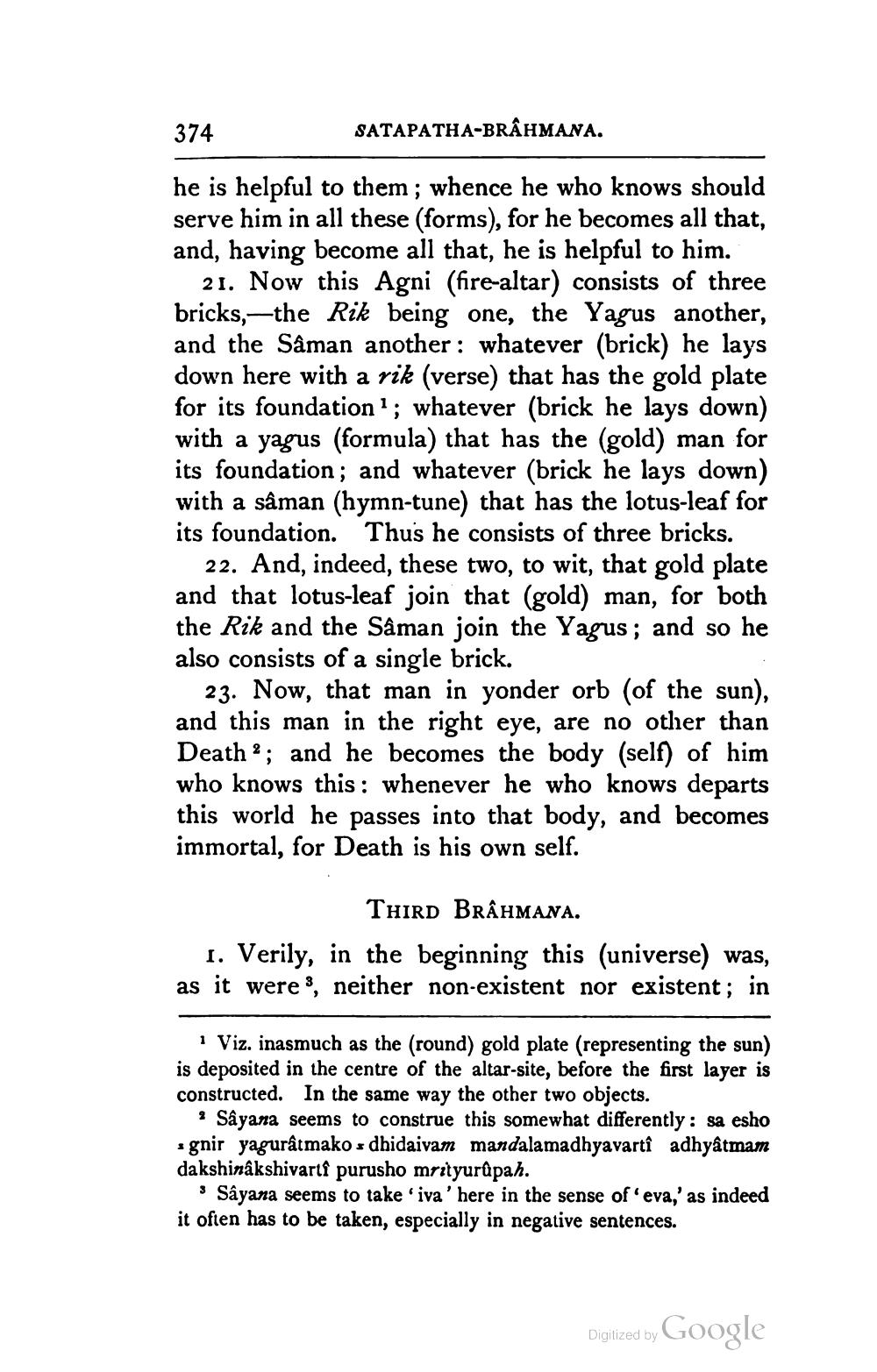________________
374
SATAPATHA-BRAHMANA.
he is helpful to them; whence he who knows should serve him in all these (forms), for he becomes all that, and, having become all that, he is helpful to him.
21. Now this Agni (fire-altar) consists of three bricks, the Rik being one, the Yagus another, and the Sâman another: whatever (brick) he lays down here with a rik (verse) that has the gold plate for its foundation; whatever (brick he lays down) with a yagus (formula) that has the (gold) man for its foundation; and whatever (brick he lays down) with a sâman (hymn-tune) that has the lotus-leaf for its foundation. Thus he consists of three bricks.
22. And, indeed, these two, to wit, that gold plate and that lotus-leaf join that (gold) man, for both the Rik and the Sâman join the Yagus; and so he also consists of a single brick.
23. Now, that man in yonder orb (of the sun), and this man in the right eye, are no other than Death; and he becomes the body (self) of him who knows this: whenever he who knows departs this world he passes into that body, and becomes immortal, for Death is his own self.
THIRD BRAHMANA.
1. Verily, in the beginning this (universe) was, as it were, neither non-existent nor existent; in
1 Viz. inasmuch as the (round) gold plate (representing the sun) is deposited in the centre of the altar-site, before the first layer is constructed. In the same way the other two objects.
2 Sâyana seems to construe this somewhat differently: sa esho gnir yagurâtmako dhidaivam mandalamadhyavartî adhyâtmam dakshinâkshivartî purusho mrityurûpah.
› Sâyana seems to take 'iva' here in the sense of it often has to be taken, especially in negative sentences.
eva,' as indeed
Digitized by
Google




